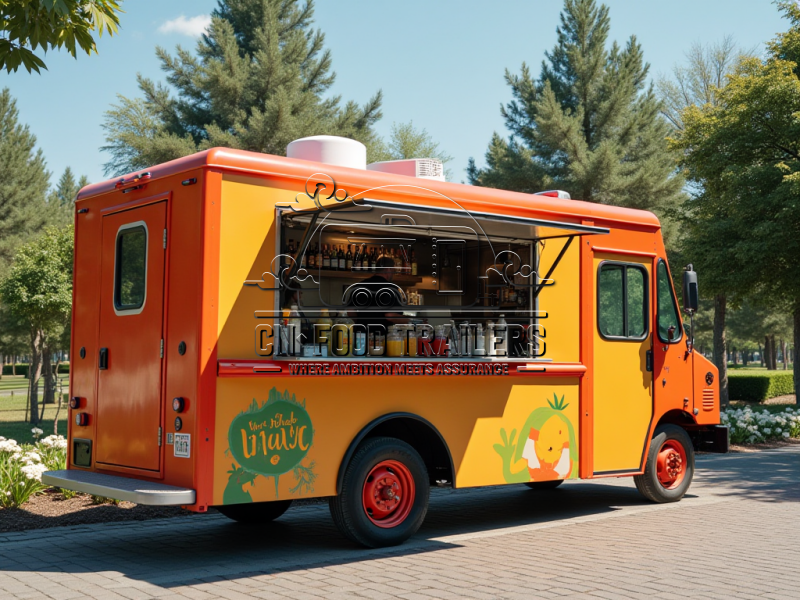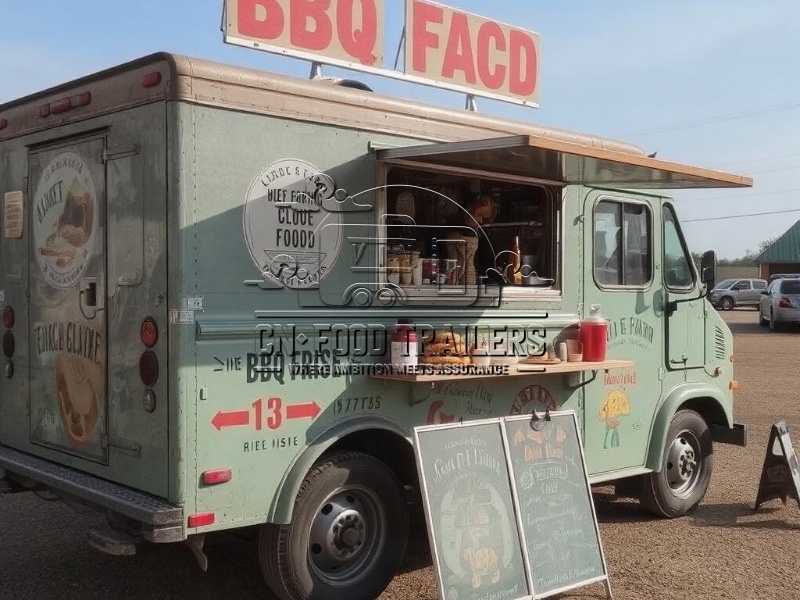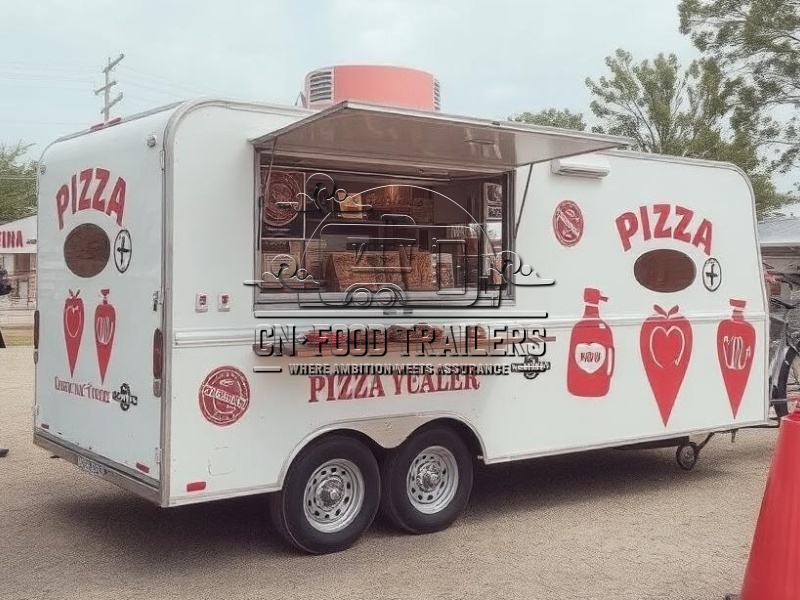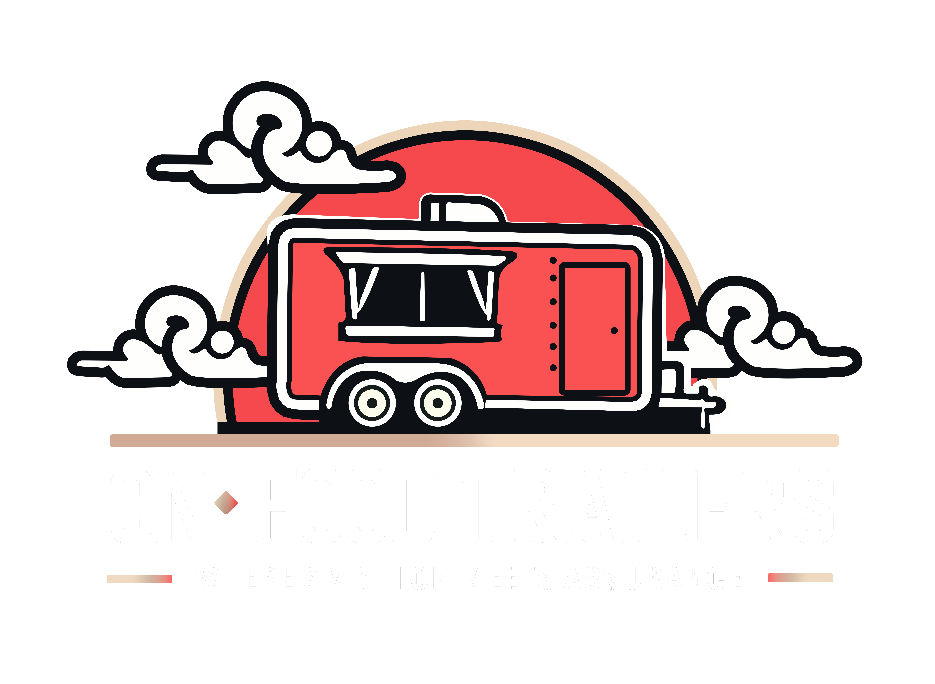electric mini food trucks usually adopt a compact body design (3-5 meters in length), with a streamlined or retro appearance, LED light strips, transparent windows and foldable awnings, combining a sense of technology and affinity. The body materials are mostly lightweight aluminum alloy or recycled plastic, and the surface is sprayed with environmentally friendly water-based paint. The colors are mainly fresh (mint green, light wood color) or futuristic silver-gray. Its core highlight is the pure electric drive system, equipped with a high-density lithium battery, which supports 8-12 hours of continuous operation, and the noise is less than 60 decibels during operation, which perfectly integrates into quiet scenes such as libraries and campuses.

Core features
1.Zero emissions and low operating costs
- Electric drive completely abandons fuel exhaust, meets the EU Euro 6 and China National VI environmental protection standards, and some cities also provide exclusive parking spaces and electricity subsidies for new energy dining cars. Calculated based on the average daily operating cost, the electricity cost is only 1/3 of the fuel cost, and long-term use can save a lot of expenses.
2.Modular design and rapid deployment
- The vehicle body adopts detachable functional modules (such as cooking area, refrigeration area, display cabinet), which supports scene switching within 1 hour. For example, it can be transformed into a “coffee + croissant” breakfast car during the morning rush hour, a pasta fast food restaurant at noon, and a cocktail bar at night.
3.Intelligent interactive experience
- Equipped with a 10.1-inch touch screen ordering system, supporting voice ordering, multi-language switching and member points functions; the roof is integrated with solar panels to power the equipment in the car; some models are equipped with IoT sensors to monitor the temperature of ingredients, remaining power and passenger flow data in real time to optimize operation strategies.
4.Community-friendly design
- Folding tables and chairs and USB charging ports are set on the side of the vehicle body to create a “mobile social space”; at night, the brand logo or artistic patterns can be projected on the ground through projection lights to enhance the sense of interaction with consumers.
Internal equipment
1.Power central system
- 48V/100Ah lithium battery pack (supports fast charging to 80% in 1 hour);
- The inverter converts DC power into 220V AC power to drive all equipment;
- The intelligent power management system automatically distributes power, giving priority to refrigeration and cooking equipment.
2.Cooking and preservation area
- Mini induction cooker/air fryer (power ≤3kW), suitable for light food preparation;
- Embedded refrigerator (adjustable from -18℃ to 4℃), storing fresh ingredients;
- Ultraviolet disinfection cabinet to ensure tableware hygiene.
3.Multi-function operating table
- Liftable cutting table, providing 0.5㎡ operating space when unfolded;
- Hidden sink (with water purification and filtration system), supporting basic cleaning needs;
- Sauce pull-out cabinet, storing more than 10 kinds of condiments in categories.
4.Digital terminal
- Dual-screen ordering machine (customer end + chef end), synchronously displaying order status;
- 5G Internet of Things module, realizing remote monitoring and menu updates;
- Thermal printer, quickly issuing tickets and synchronizing to the kitchen.
Application
1.Urban microcirculation catering
- Morning rush hour: stop at the subway entrance and provide “3-minute breakfast set” (coffee + sandwich);
- Noon: enter the science and technology park and provide light salad and low-calorie pasta;
- Evening: transform into a “mobile tavern” to sell craft beer and special snacks.
2.Cultural tourism and IP linkage
- In the scenic area: launch a “theme dining car + cultural and creative ice cream” combination, such as the Forbidden City red wall-shaped dining car selling “A Thousand Miles of Rivers and Mountains” latte art coffee;
- Film festival: co-branded with popular IPs, such as the “Barbie” theme dining car providing pink macarons and sparkling water.
3.Emergency and public welfare services
- Disaster relief: quickly deployed to the disaster-stricken area, providing hot food and drinking water;
- Community services: regularly tour the elderly activity center, provide soft food sets and conduct healthy diet lectures.
4.Brand flash and experience marketing
- Luxury brands: set up mini dining cars outside the flagship store and give away brand-customized desserts;
- Automobile launch: The dining car serves as an “energy supply station” to provide guests with molecular ice cream at the molecular cuisine level.
5.Activate the night economy
- Night market: Create a “cyberpunk-style” food spot through color-changing light strips and neon signs;
- Music festival: Cooperate with artists to launch limited-edition dishes, such as “singer signature burger + cheering color drink”.






Leave A Comment